Event Monitoring in Salesforce
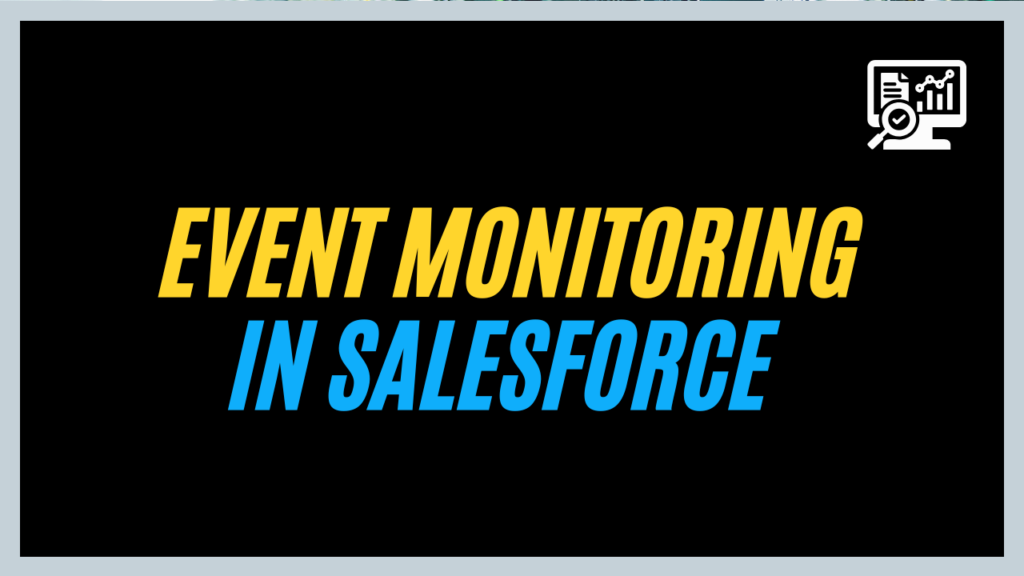
In this blog, we’ll understand how Event Monitoring in Salesforce can be used to track user activity effectively. We’ll cover the steps to enable Event Monitoring, explore the Event Log File Browser and walk through the various types of event monitoring available to enhance your Salesforce environment’s security and performance insights.
Event Monitoring
Event Monitoring in Salesforce is a tool that helps you keep your data safe by tracking what users do in your Salesforce. It shows detailed information about user activities, like when they log in, access reports, export data, or change records.
Types of Event Monitoring
Login and Logout Events
This includes monitoring both successful and failed login attempts, identifying unauthorized access, and keeping track of user logout activity to spot any irregularities.
URI
URI event monitoring tracks user interactions with web elements, such as clicks on links, buttons, and other components.
Lightning
In Lightning Experience and the Salesforce mobile app, event monitoring keeps track of user clicks, checks how well components and pages are performing, and logs any errors or issues that happen.
Visualforce page
Visualforce page loads are monitored to see when users access and interact with Visualforce pages in Salesforce. This information helps identify which pages are used most often.
Application programming interface (API)
This involves tracking interactions with Salesforce APIs, such as REST API, SOAP API, and Bulk API. By analyzing these calls, you can identify patterns in API usage, detect unauthorized access
Apex executions
Report exports
This allows us to keep track of when reports are downloaded from Salesforce and by whom.
Console
It tracks interactions with the Salesforce Console, including component usage, record creation, and updates.
Content Transfer
It Monitors the transfer of files and attachments within Salesforce, including uploads, downloads, and sharing.
External Cross-Org Callout
Monitors outbound calls to external systems or organizations.
Insufficient Access
Tracks instances where users attempt to access data or perform actions they don’t have permission for.
Sandbox
Monitors activities within sandbox environments, including refreshes, deployments, and data transfers.
Additionally, event monitoring can track other types of Events such as:
- Dashboard
- Document Attachment Downloads
- Flow Execution
- Login As
- Sandbox
- Search
- Wave Download
- Wave Performance
- Sites
- Transaction Security
How to Enable Event Monitoring in Salesforce
- Click on the Setup gear icon.
- In the Quick Find box, search for “Event Monitoring Settings” and select it.
- In the Event Monitoring Settings page, Enable the Generate event log files.

- Enable the View event log data in analytics apps
The “View event log data in analytics apps” setting in Salesforce enables the integration of event log data with Salesforce Analytics Cloud. This integration allows you to create advanced visualizations, dashboards, and reports, offers good knowledge about org’s operations
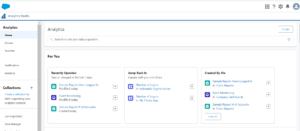

- Click Save.
The Event Log File (ELF) Browser is a tool in Event monitoring that helps you see and download detailed records of what’s happening in your Salesforce Org. These records, called logs, show things like when users log in or out, what they click on and if there are any problems.
All the things that happen in your Salesforce account, like logins, clicks, and downloads, are recorded in event log files. These files are created whenever Events happen in the Org.
Where we can check the Event Log File –
- Click on the Setup gear icon in the top right corner.
- In the Quick Find box, search for “Event Log File Browser” and select it.
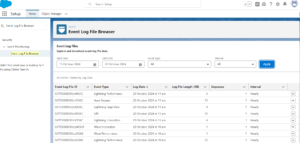
- Its Advance Search Enables us to search for specific events based on criteria such as user, date, time, event type, and more.
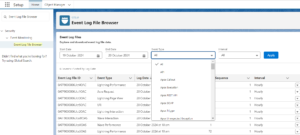
- We can select any Event type from the dropdown and also download the file of the particular Record.
Monitoring the Data Loss
To investigate potential data leaks or theft of confidential information, we can examine the “ReportExport” log file, which records instances of report downloads from Salesforce. By analyzing the “URI” and “USER_ID” fields in this file, we can identify which reports were downloaded and determine the user responsible for each download.
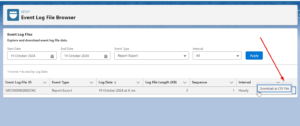

Are you preparing for the Salesforce AI Certifications? Check out the Salesforce certification practice set here
FAQs
1. What is Real-Time Monitoring?
Real-Time Event Monitoring is a feature that allows you to see events in Salesforce almost immediately after they happen, instead of waiting 24 hours. This is helpful for quickly identifying any unusual activity. You can also save information about these events for later review or analysis.
2. What is Event Manager?
The Event Manager in Salesforce is a declarative tool that allows you to manage the streaming and storage settings for Real-Time Event Monitoring events. It enables administrators to easily enable or disable streaming and storage for specific events.
3. What are the components of Salesforce Shield?
The Components of Salesforce Shield include -Shield Platform Encryption, Event Monitoring, and Field Audit Trail.
Conclusion –
Salesforce’s Event Monitoring empowers you to track user activity and ensure data security, providing valuable insights into system performance. By enabling different types of event monitoring—such as login tracking, API calls, report downloads, and user actions across Salesforce Classic and Lightning—admins can quickly detect unusual activity or potential security risks in real-time.
The Event Log File Browser simplifies the process of searching, viewing, and downloading detailed records. Additionally, connecting event data with Salesforce Analytics Cloud enables you to create insightful reports and visualizations, offering a clearer view of your organization’s operations and security posture.

